Computational Fluid Dynamics Laboratory
WenoCFD
We are developing a new incompressible Navier-Stokes large-eddy simulation
(LES) CFD code based on high-order WENO-based finite-difference methods, advanced
subgrid-scale (SGS) turbulence models, and the fictitious domain approach
for complex geometries. Two versions of the code are currently under
development. The first WenoHemo is focusing on hemodynamics and the
second WenoHydro focusing on fundamental and applied fluid flows including
applications to fluid power. Some recent examples of the codes ability
to handle turbulent flow in complex geometries are shown below. A manuscript
on the LES of the cubic lid-driven cavity reporting validation of the SGS
turbulence model has been accepted for publication to Journal of Computational
Physics. A manuscript on the 2D lid-driven cavity flow with rotation (studying
bifurcation and chaos) has been submitted to the journal Computers and Fluids.
Manuscripts on the application of the code to some of the complex geometries
shown below are also under preparation. Current code developments involve
inclusion of a combustion model and a cavitation model to enable additional
studies with an even broader scope. Inclusion of two-way fluid-structure
interactions capabilities are also planned. The first two figures below are
2D cases and the rest are 3D LES. The 3D flow pictures show isosurfaces of vortical structures as
detected using the lambda2 criterion of Jeong and Hussain (1995).
A compressible version featuring the use of a newly developed version of the
ESWENO scheme is also under development. Applications to benchmark cases
and supersonic reacting shear layers are described in a recently submitted
manuscript. Extensions to more complex geometries using a multiblock approach
are underway with initial focus on high-speed boundary layer transition.
- 2D simulations of lid-driven cavity flow with rotation
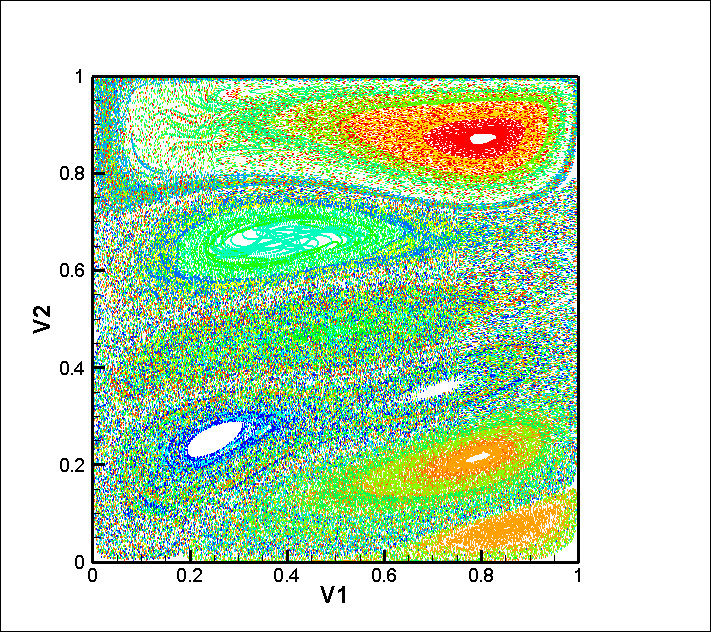
- 2D Taylor-Couette flow in rotating concentric cylinders
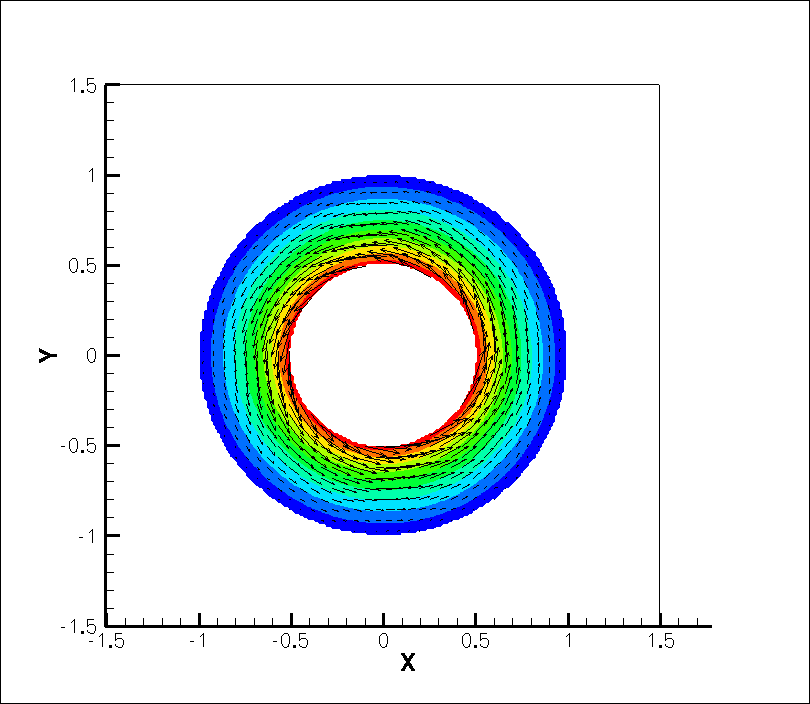
- LES of cubic lid-driven cavity flow
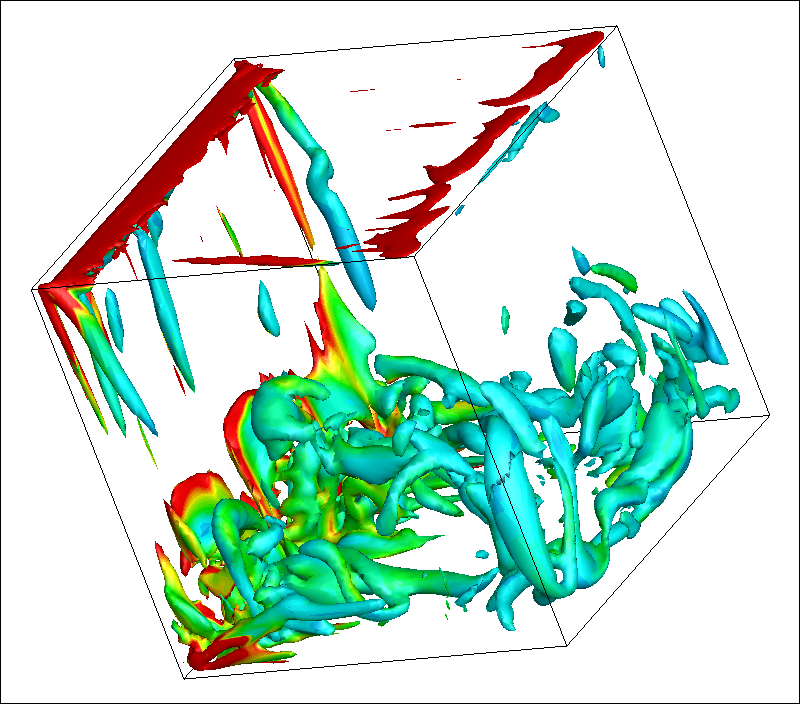
- LES of flow over a v-gutter
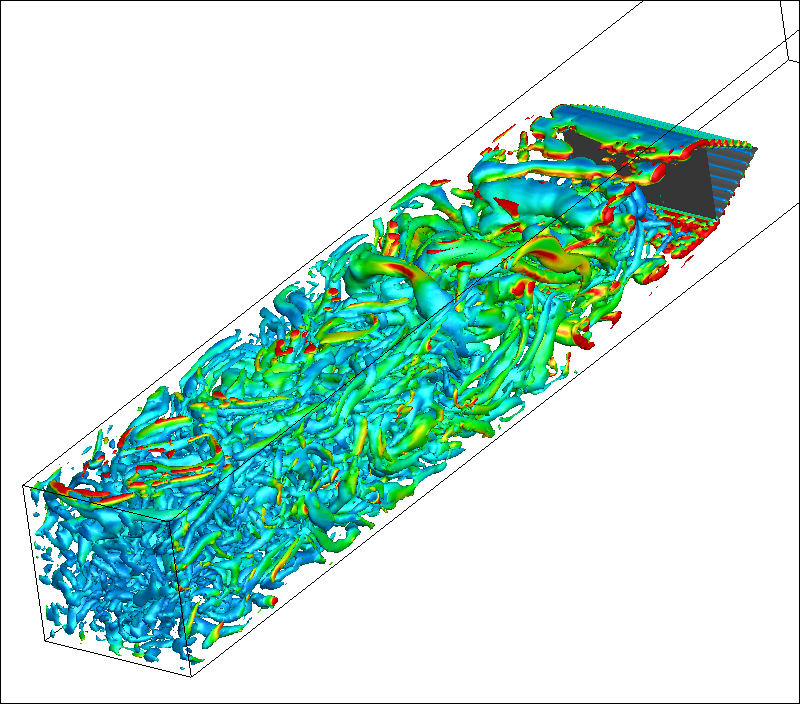
- LES of flow in a model eccetric stenotic blood vessel
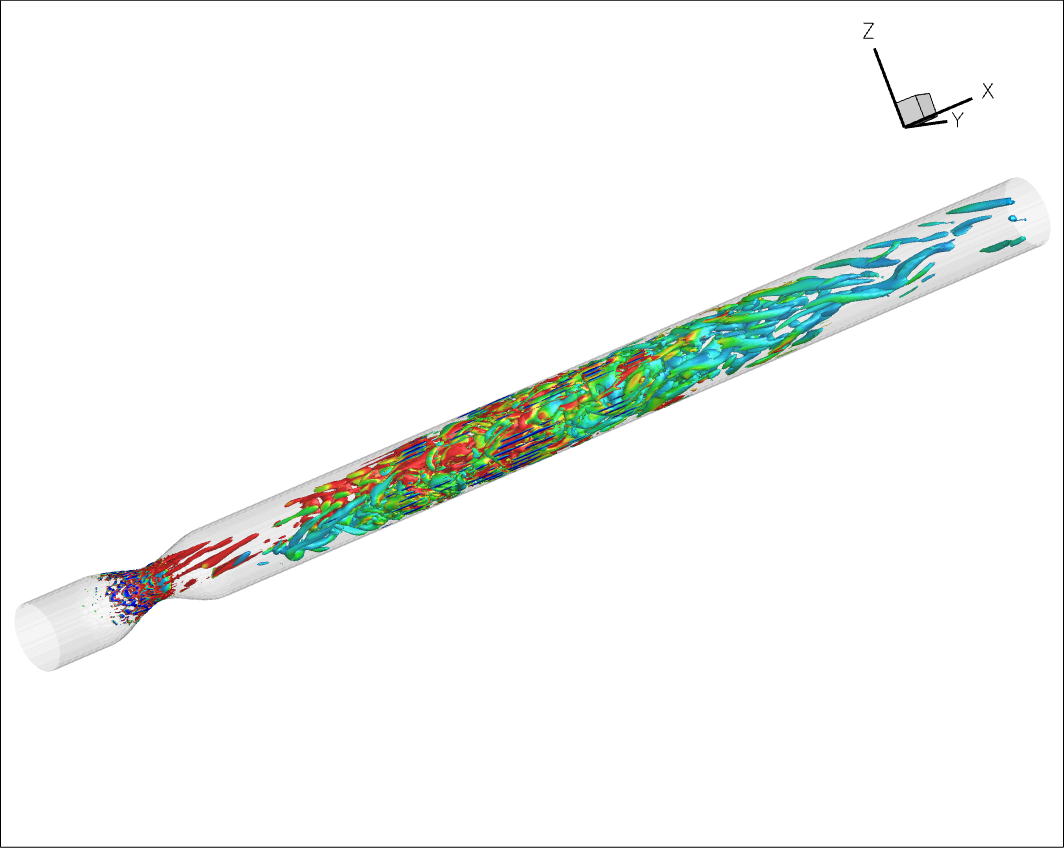
- LES of flow in a total cavopulmonary connection
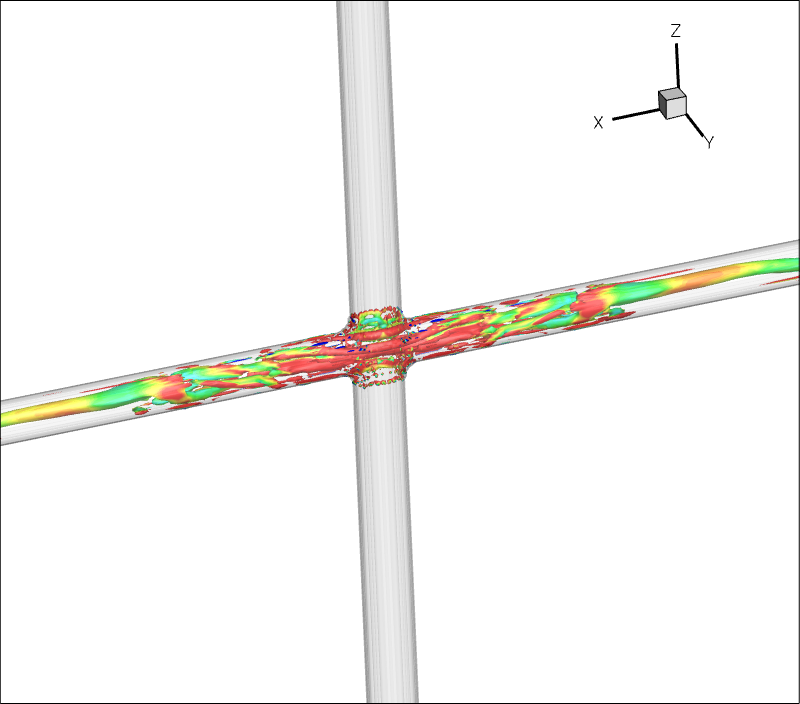
- Geometries for carotid artery
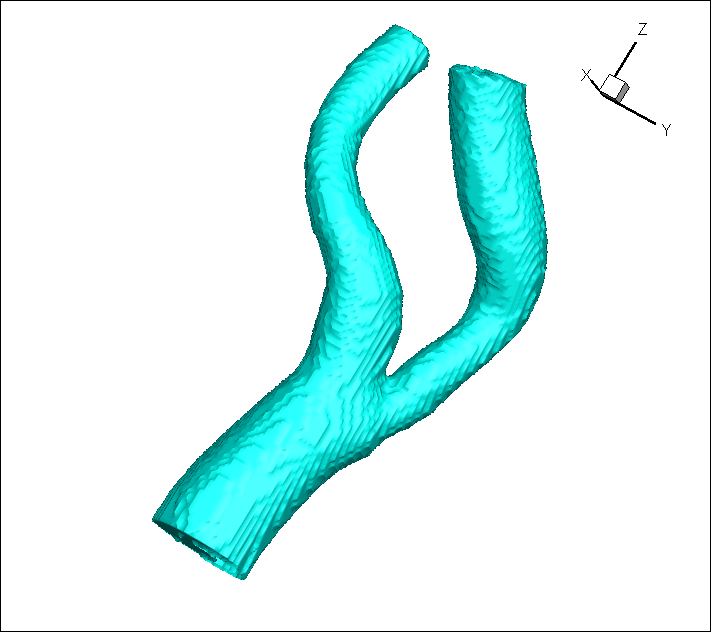
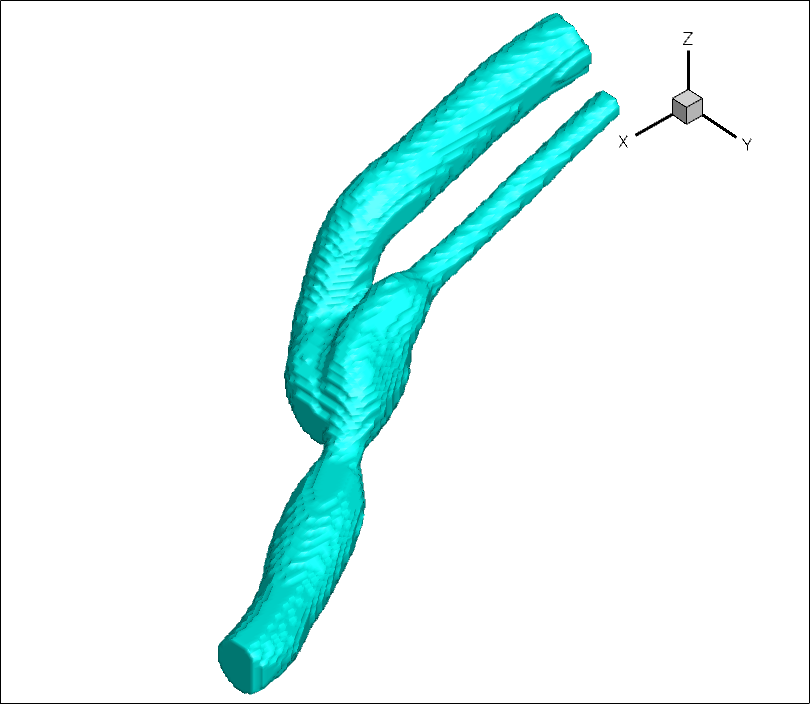
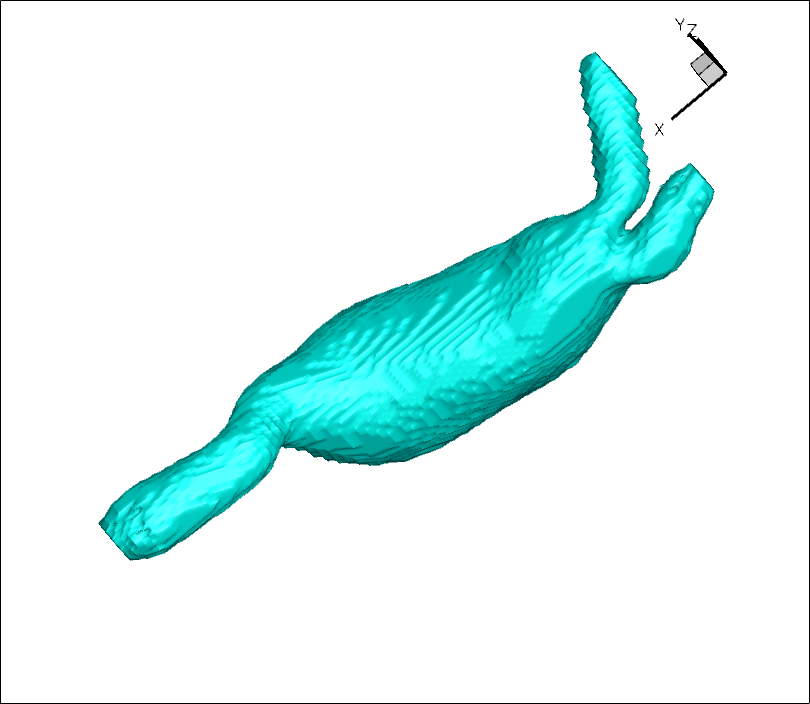
- Flow through a model valve (cut view)

- Flow through a model valve (full view)

- Flow over oscillating body (insect-like)
- Laminar pipe flow becoming turbulent as it flows over a rotating disc
- Turbulent flow in 3D lid-driven cubic cavity
- Buoyancy scalar mixing
- Three-dimensional LES lock-exchange (ocean-related) simulation
Prof. Frankel's MAIN PAGE





















